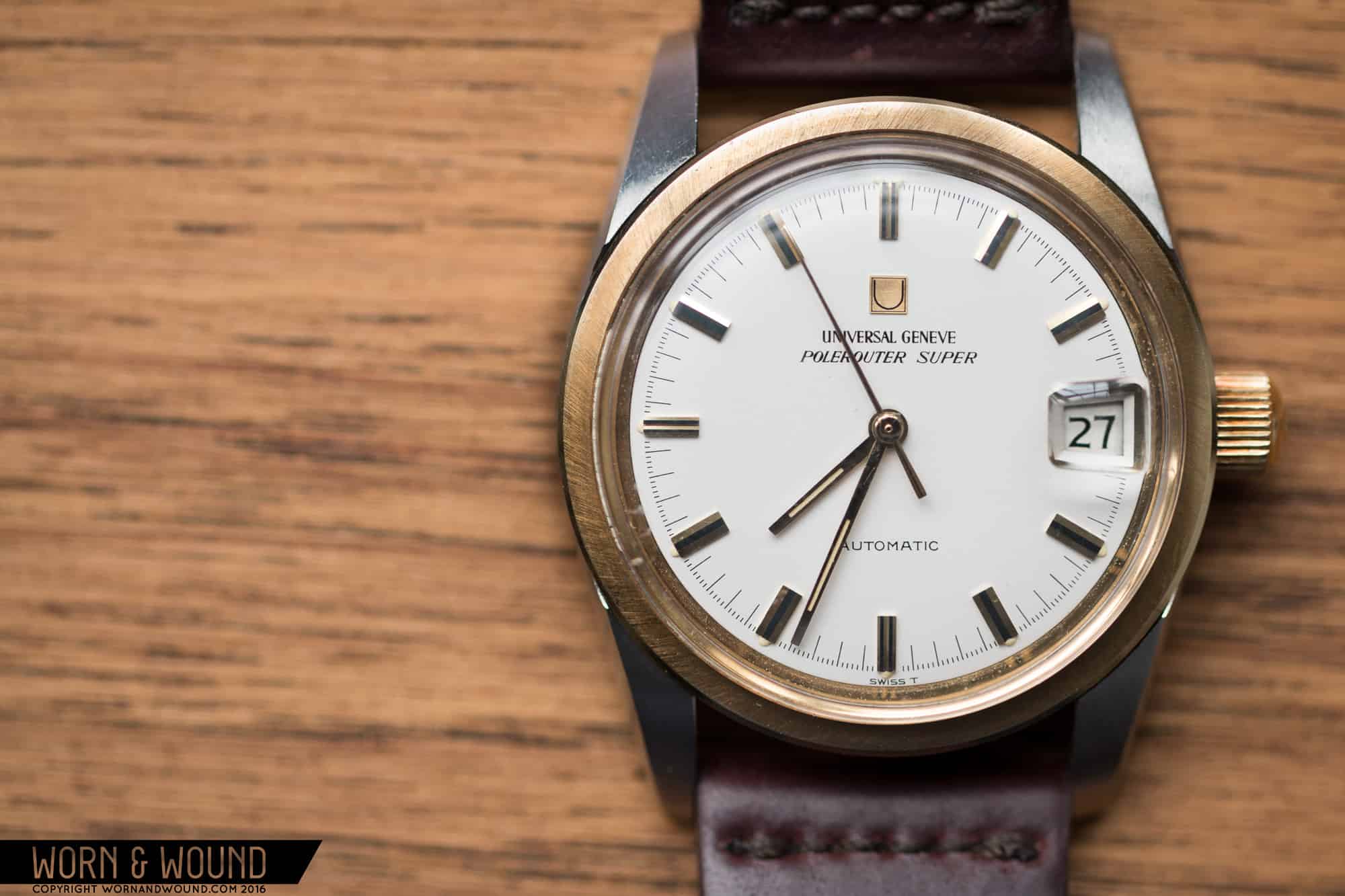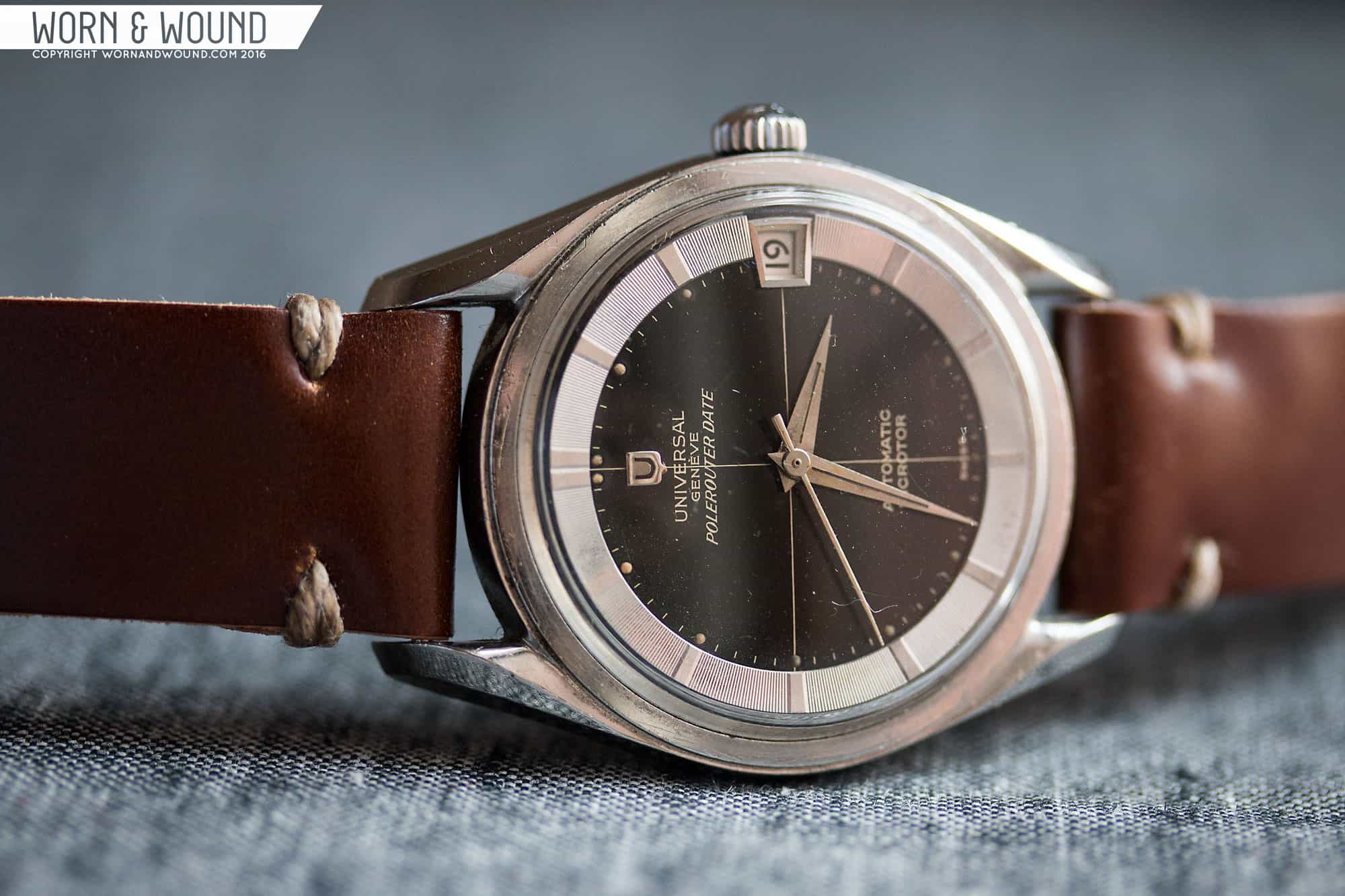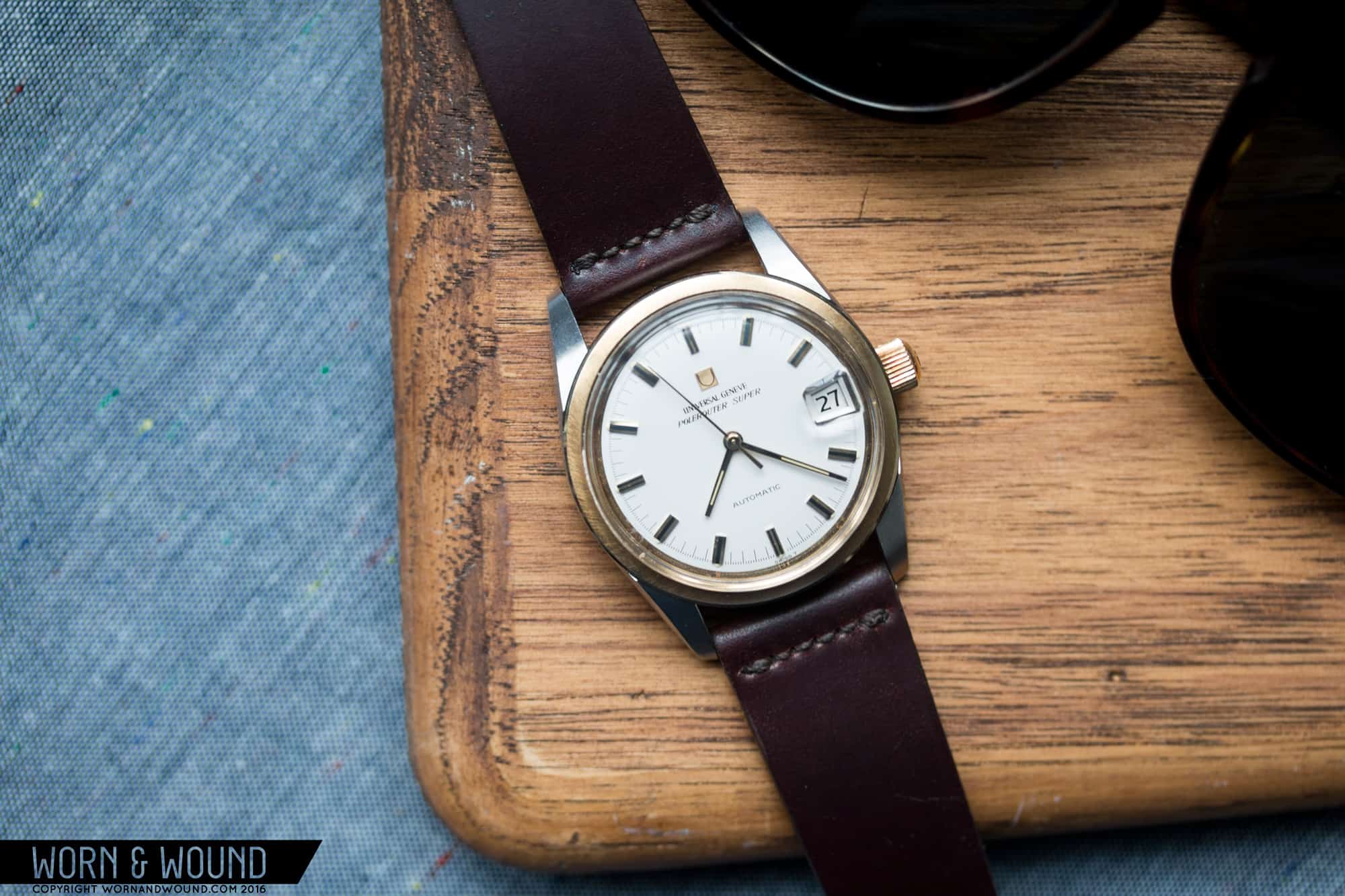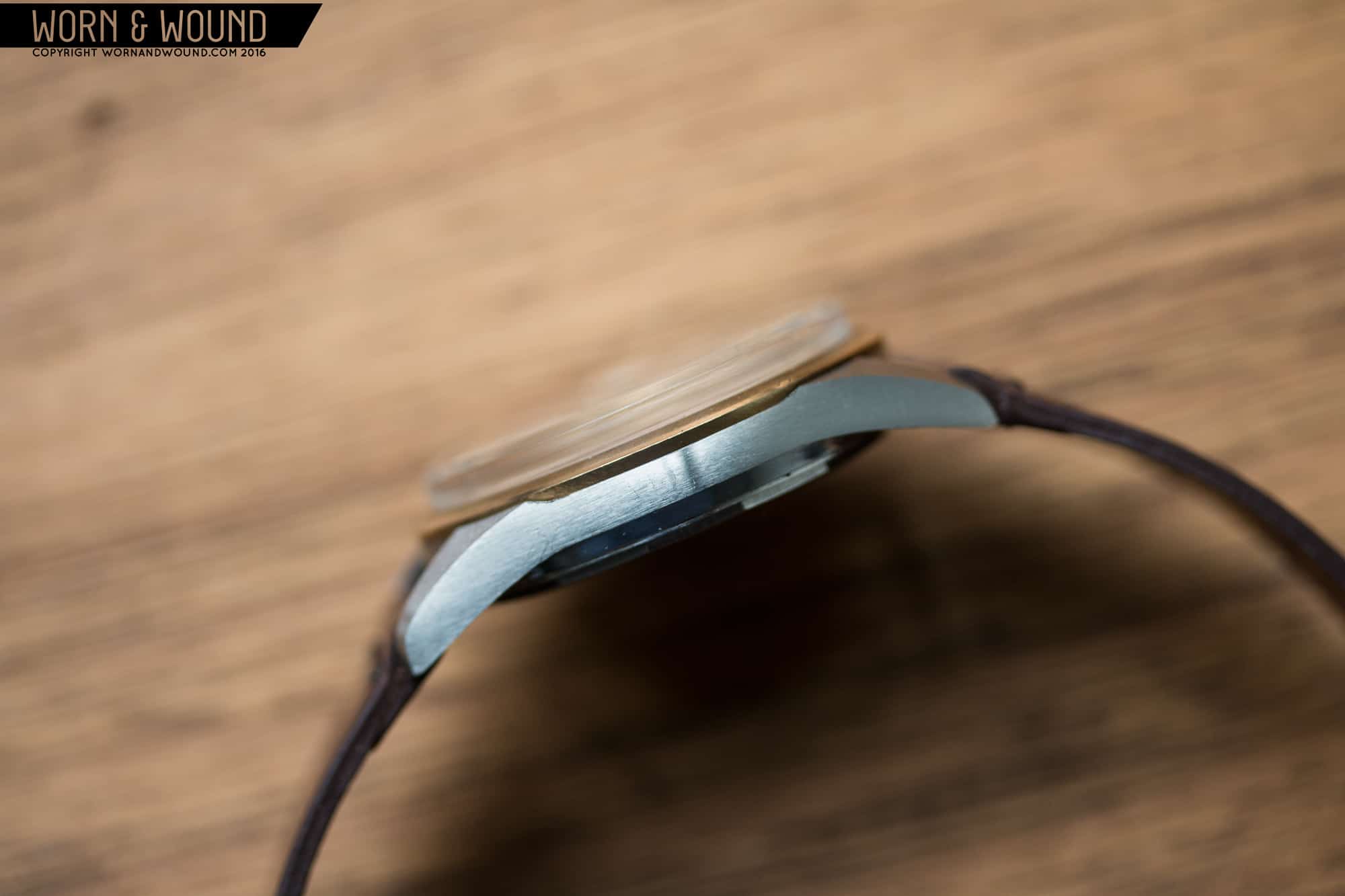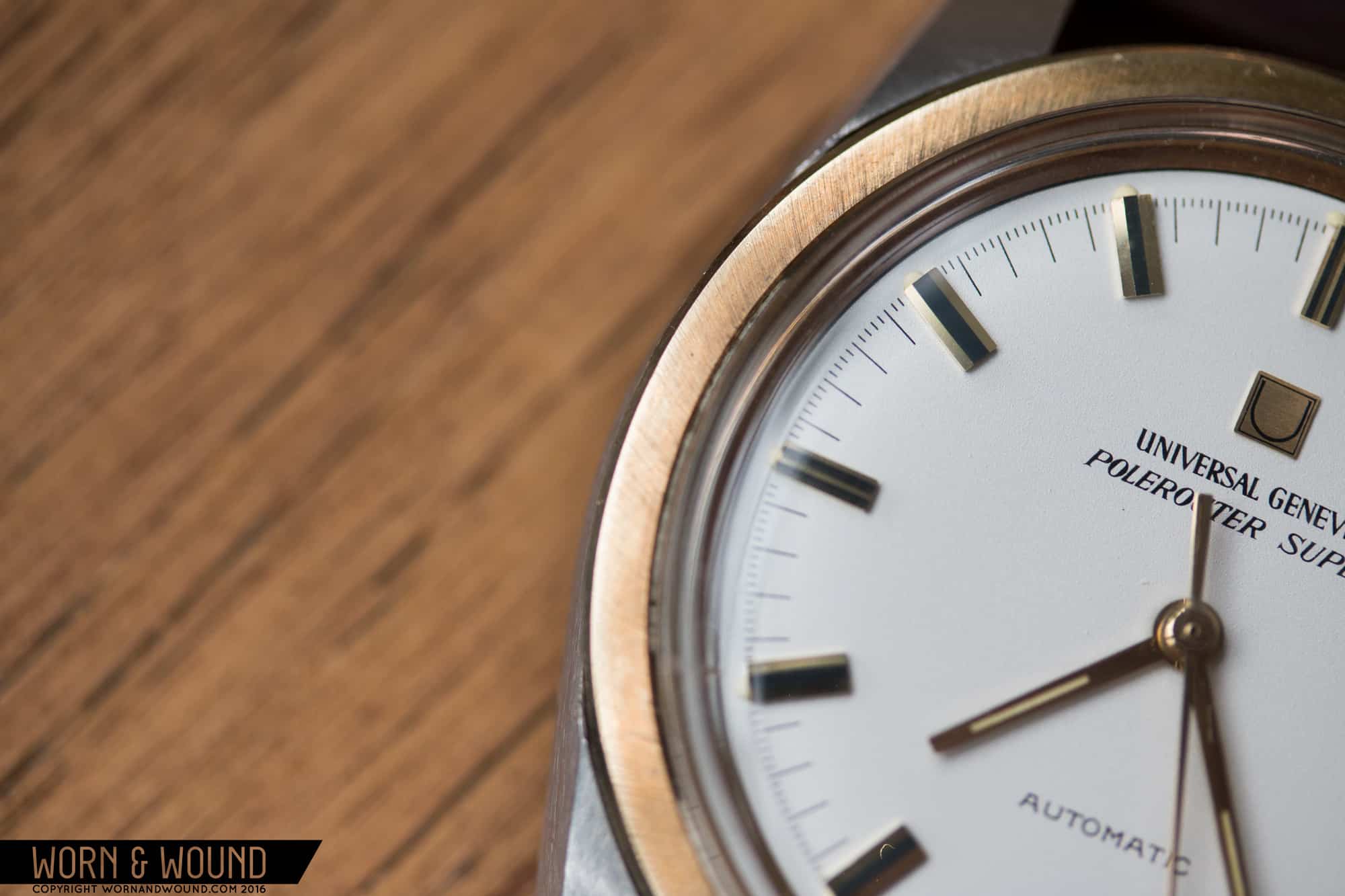One of my favorite vintage watches, and one that has seen an uptick in popularity in recent years among collectors, is the Universal Genève Polerouter. To be clear, the Polerouter is not a single distinct model, but rather a family of watches that began in 1954 and ended around 1969 (with a brief yet uninspired return in the ‘80s). We’ve covered this line before here on worn&wound in a series of articles: a history and overview of the Polerouter line, a close look at the Polerouter Sub, and a breakdown of the controversial Polerouter Sub Super Compressor. From these three articles alone, the variety of the Polerouter line is evident. Today, we’re going to dive even deeper into that lineage and take a closer look at a later, little-known variant—the Polerouter Super.
 The best-known Polerouters are the earliest references based on Gerald Genta’s initial design. The first watch to bear his aesthetic, the Polarouter, was commissioned by the Scandinavian Airlines Systems (SAS) to be given to their pilots upon the completion of the historic Copenhagen-Los Angeles polar flight—an endeavor that effectively cut hours off flight times by opening routes over the North Pole. Officially released in 1954, the Polarouter—named after said polar flights, though the line was later rebadged Polerouter—would become the springboard for most future references within the collection.
The best-known Polerouters are the earliest references based on Gerald Genta’s initial design. The first watch to bear his aesthetic, the Polarouter, was commissioned by the Scandinavian Airlines Systems (SAS) to be given to their pilots upon the completion of the historic Copenhagen-Los Angeles polar flight—an endeavor that effectively cut hours off flight times by opening routes over the North Pole. Officially released in 1954, the Polarouter—named after said polar flights, though the line was later rebadged Polerouter—would become the springboard for most future references within the collection.









 Featured Videos
Featured Videos




